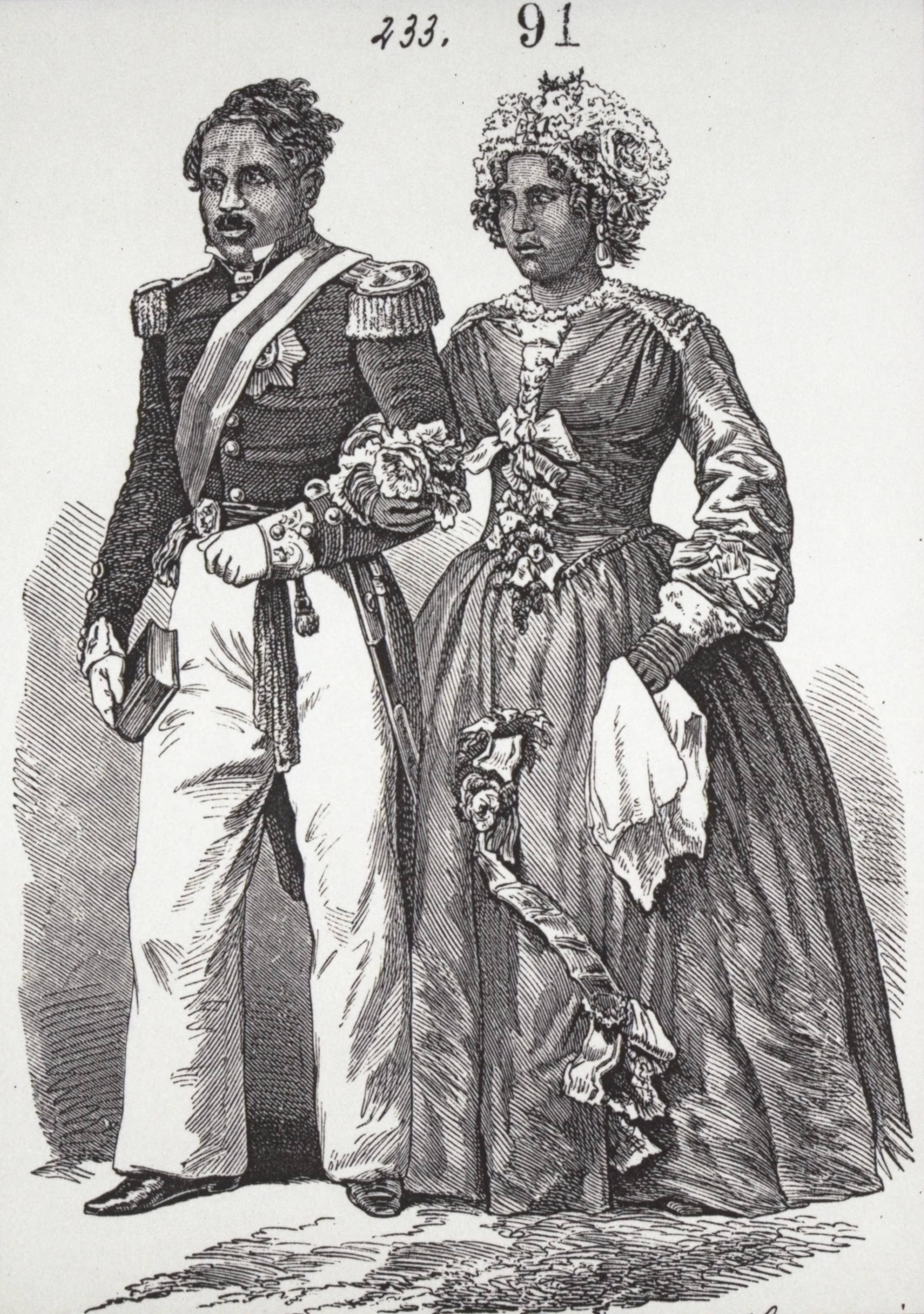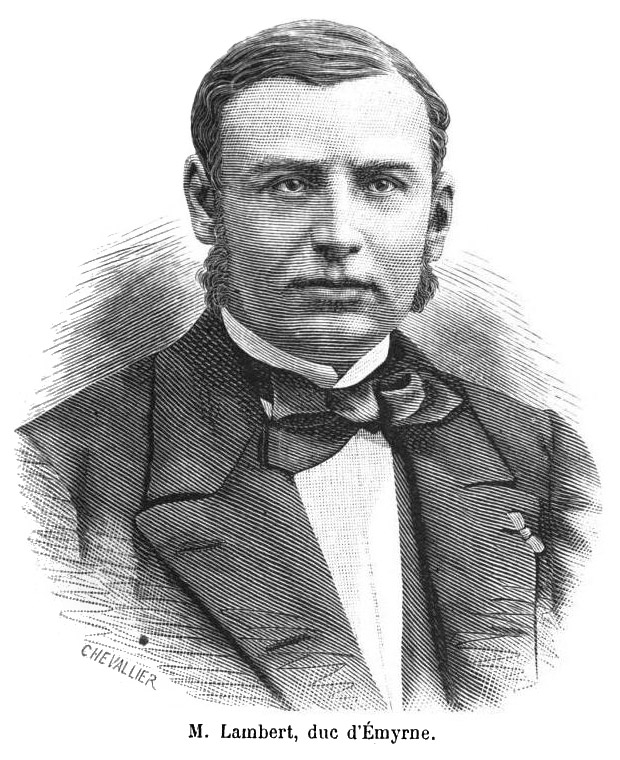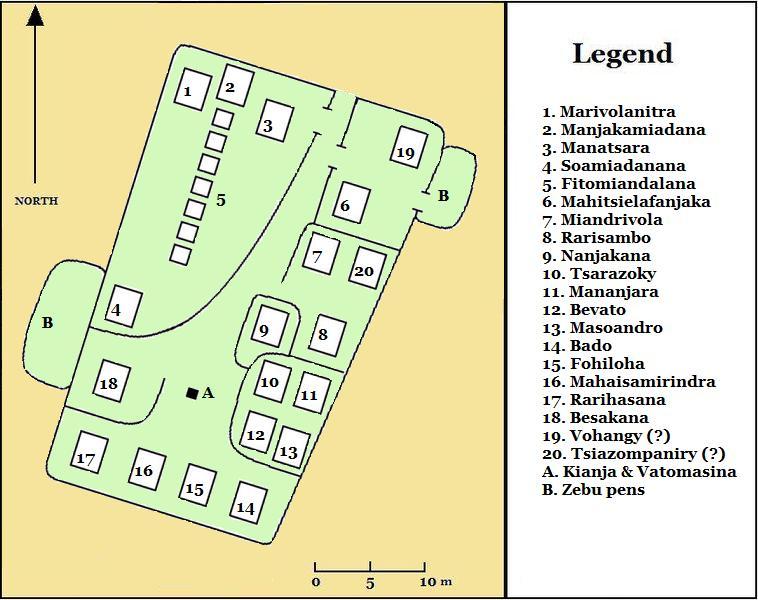|
Jean Laborde
Jean Laborde (16 October 1805 in Auch - 27 December 1878 in Mantasoa, Madagascar) was an adventurer and early industrialist in Madagascar. He became the chief engineer of the Merina monarchy, supervising the creation of a modern manufacturing center under Queen Ranavalona I. Later he became the first French consul to Madagascar, when the government of Napoleon III used him to establish French influence on the island. Born to a blacksmith, Laborde emigrated to India, before attempting to recover treasure from ships wrecked along the coast of Madagascar in 1831. After becoming shipwrecked himself, Laborde made his way to Antananarivo where he manufactured muskets and gunpowder for the queen in a factory located in Ilafy. Laborde then organized 20,000 forced labourers to build an industrial complex in Mantasoa, closer to water, wood, and iron ore. There, 1,200 workmen produced cannon, swords, bricks, tiles, pottery, glass, porcelain, silk, soap, candles, sealing-wax, lime, cement, ... [...More Info...] [...Related Items...] OR: [Wikipedia] [Google] [Baidu] |
Antananarivo
Antananarivo ( French: ''Tananarive'', ), also known by its colonial shorthand form Tana, is the capital and largest city of Madagascar. The administrative area of the city, known as Antananarivo-Renivohitra ("Antananarivo-Mother Hill" or "Antananarivo-Capital"), is the capital of Analamanga region. The city sits at above sea level in the center of the island, the highest national capital by elevation among the island countries. It has been the country's largest population center since at least the 18th century. The presidency, National Assembly, Senate and Supreme Court are located there, as are 21 diplomatic missions and the headquarters of many national and international businesses and NGOs. It has more universities, nightclubs, art venues, and medical services than any city on the island. Several national and local sports teams, including the championship-winning national rugby team, the Makis are based here. Antananarivo was historically the capital of the Merina peop ... [...More Info...] [...Related Items...] OR: [Wikipedia] [Google] [Baidu] |
Rainiharo
Field Marshal Rainiharo (died on 18 October 1852 in Rabodomiarana) was from 1833 to 1852 prime minister of the Kingdom of Imerina in the central highlands of Madagascar. Biography Rainiharo was born as ''Ravoninahitriniarivo'' into the Hova (freeman) class of the Merina people in the central highlands of Madagascar. His father, Andriantsilavonandriana, served as an adviser to the king Andrianampoinimerina. After distinguishing himself as a military officer in a series of campaigns of pacification in the southeastern part of the island, he was chosen as a spouse by Queen Ranavalona I following the death of her first husband in 1833, and was thereupon promoted to Commander-in-Chief of the military and Prime Minister of Madagascar.Madagascar prime ministers rulers.org, accessed 15 August 2008 He retained these roles until his death ... [...More Info...] [...Related Items...] OR: [Wikipedia] [Google] [Baidu] |
1878 Deaths
Events January–March * January 5 – Russo-Turkish War – Battle of Shipka Pass IV: Russian and Bulgarian forces defeat the Ottoman Empire. * January 9 – Umberto I becomes King of Italy. * January 17 – Battle of Philippopolis: Russian troops defeat the Turks. * January 23 – Benjamin Disraeli orders the British fleet to the Dardanelles. * January 24 – Russian revolutionary Vera Zasulich shoots at Fyodor Trepov, Governor of Saint Petersburg. * January 28 – ''The Yale News'' becomes the first daily college newspaper in the United States. * January 31 – Turkey agrees to an armistice at Adrianople. * February 2 – Greece declares war on the Ottoman Empire. * February 7 – Pope Pius IX dies, after a 31½ year reign (the longest definitely confirmed). * February 8 – The British fleet enters Turkish waters, and anchors off Istanbul; Russia threatens to occupy Istanbul, but does not carry out the threat. * Feb ... [...More Info...] [...Related Items...] OR: [Wikipedia] [Google] [Baidu] |
1805 Births
Eighteen or 18 may refer to: * 18 (number), the natural number following 17 and preceding 19 * one of the years 18 BC, AD 18, 1918, 2018 Film, television and entertainment * ''18'' (film), a 1993 Taiwanese experimental film based on the short story ''God's Dice'' * ''Eighteen'' (film), a 2005 Canadian dramatic feature film * 18 (British Board of Film Classification), a film rating in the United Kingdom, also used in Ireland by the Irish Film Classification Office * 18 (''Dragon Ball''), a character in the ''Dragon Ball'' franchise * "Eighteen", a 2006 episode of the animated television series ''12 oz. Mouse'' Music Albums * ''18'' (Moby album), 2002 * ''18'' (Nana Kitade album), 2005 * '' 18...'', 2009 debut album by G.E.M. Songs * "18" (5 Seconds of Summer song), from their 2014 eponymous debut album * "18" (One Direction song), from their 2014 studio album ''Four'' * "18", by Anarbor from their 2013 studio album '' Burnout'' * "I'm Eighteen", by Alice Cooper common ... [...More Info...] [...Related Items...] OR: [Wikipedia] [Google] [Baidu] |
Furcifer Labordi
Labord's chameleon (''Furcifer labordi'') is a semelparous species of chameleon, a lizard in the family Chamaeleonidae. The species is endemic to Madagascar. Etymology The specific name, ''labordi'', is in honor of French adventurer Jean Laborde. Geographic range Laborde's chameleon is associated with spiny and deciduous forests in the south-west regions of Madagascar. Life cycle Like other ''Furcifer'' species ('' F. antimena'', '' F. lateralis''), ''F. labordi'' has an obligate year-long lifecycle. It lives for only about 4 to 5 months, making it the shortest lifespan ever recorded for a four-legged vertebrate. In their natural habitat, eggs hatch with the first rains in November. Their initial growth is rapid, and adulthood is reached by January, at which time they breed. By late February or early March, females have deposited the eggs which will hatch the next year, and the entire population dies until the next hatching. No other tetrapod Tetrapods (; ) are four-l ... [...More Info...] [...Related Items...] OR: [Wikipedia] [Google] [Baidu] |
Endemism
Endemism is the state of a species being found in a single defined geographic location, such as an island, state, nation, country or other defined zone; organisms that are indigenous to a place are not endemic to it if they are also found elsewhere. For example, the Cape sugarbird is found exclusively in southwestern South Africa and is therefore said to be ''endemic'' to that particular part of the world. An endemic species can be also be referred to as an ''endemism'' or in scientific literature as an ''endemite''. For example '' Cytisus aeolicus'' is an endemite of the Italian flora. '' Adzharia renschi'' was once believed to be an endemite of the Caucasus, but it was later discovered to be a non-indigenous species from South America belonging to a different genus. The extreme opposite of an endemic species is one with a cosmopolitan distribution, having a global or widespread range. A rare alternative term for a species that is endemic is "precinctive", which applies to ... [...More Info...] [...Related Items...] OR: [Wikipedia] [Google] [Baidu] |
Chameleon
Chameleons or chamaeleons (family Chamaeleonidae) are a distinctive and highly specialized clade of Old World lizards with 202 species described as of June 2015. The members of this family are best known for their distinct range of colors, being capable of shifting to different hues and degrees of brightness. The large number of species in the family exhibit considerable variability in their capacity to change color. For some, it is more of a shift of brightness (shades of brown); for others, a plethora of color-combinations (reds, yellows, greens, blues) can be seen. Chameleons are distinguished by their zygodactylous feet, their prehensile tail, their laterally compressed bodies, their head casques, their projectile tongues, their swaying gait, and crests or horns on their brow and snout. Chameleons' eyes are independently mobile, and because of this there are two separate, individual images that the brain is analyzing of the chameleon’s environment. When hunting prey, they ... [...More Info...] [...Related Items...] OR: [Wikipedia] [Google] [Baidu] |
Species
In biology, a species is the basic unit of classification and a taxonomic rank of an organism, as well as a unit of biodiversity. A species is often defined as the largest group of organisms in which any two individuals of the appropriate sexes or mating types can produce fertile offspring, typically by sexual reproduction. Other ways of defining species include their karyotype, DNA sequence, morphology, behaviour or ecological niche. In addition, paleontologists use the concept of the chronospecies since fossil reproduction cannot be examined. The most recent rigorous estimate for the total number of species of eukaryotes is between 8 and 8.7 million. However, only about 14% of these had been described by 2011. All species (except viruses) are given a two-part name, a "binomial". The first part of a binomial is the genus to which the species belongs. The second part is called the specific name or the specific epithet (in botanical nomenclature, also sometimes i ... [...More Info...] [...Related Items...] OR: [Wikipedia] [Google] [Baidu] |
Radama II
Radama II (September 23, 1829 – May 12, 1863 'contested'' was the son and heir of Queen Ranavalona I and ruled from 1861 to 1863 over the Kingdom of Madagascar, which controlled virtually the entire island. Radama's rule, although brief, was a pivotal period in the history of the Kingdom of Madagascar. Under the unyielding and often harsh 33-year rule of his mother, Queen Ranavalona I, Madagascar had successfully preserved its cultural and political independence from European colonial designs. Rejecting the queen's policy of isolationism and persecution of Christians, Radama II permitted religious freedom and re-opened Madagascar to European influence. Under the terms of the Lambert Charter, which Radama secretly contracted in 1855 with French entrepreneur Joseph-François Lambert while Ranavalona still ruled, the French were awarded exclusive rights to the exploitation of large tracts of valuable land and other lucrative resources and projects. This agreement, which was l ... [...More Info...] [...Related Items...] OR: [Wikipedia] [Google] [Baidu] |
Joseph-François Lambert
Joseph-François Lambert, the "Duke of Imerina" (1824–1873) was a French adventurer, businessman, and diplomat who fathered the Lambert Charter. Early years Lambert was born in Redon, Ille-et-Vilaine in 1824. He traveled to Mauritius where, at the age of 22, he married a wealthy widow and accumulated further wealth by entering the slave trade. In 1854 he relieved a garrison in Madagascar held by Merina troops that had come under threat by a coastal community rebelling against the rule of Queen Ranavalona I. As a reward, he was invited to a royal audience with the queen at her royal compound in Antananarivo. There he met Jean Laborde, a Frenchman who had established an armament industry for the Merina army. Lambert also made the acquaintance of the queen's son and future heir, Prince Rakoto. Lambert Charter According to Lambert, the prince gave him the exclusive right to exploit all minerals, forests, and unoccupied land in Madagascar in exchange for a 10-percent royalty paya ... [...More Info...] [...Related Items...] OR: [Wikipedia] [Google] [Baidu] |
Rova Of Antananarivo
The Rova of Antananarivo ( mg, Rovan'i Manjakamiadana ) is a royal palace complex (''rova'') in Madagascar that served as the home of the sovereigns of the Kingdom of Imerina in the 17th and 18th centuries, as well as of the rulers of the Kingdom of Madagascar in the 19th century. Its counterpart is the nearby fortified village of Ambohimanga, which served as the spiritual seat of the kingdom in contrast to the political significance of the Rova in the capital. Located in the central highland city of Antananarivo, the Rova occupies the highest point on Analamanga, formerly the highest of Antananarivo's many hills. Merina king Andrianjaka, who ruled Imerina from around 1610 until 1630, is believed to have captured Analamanga from a Vazimba king around 1610 or 1625 and erected the site's first fortified royal structure. Successive Merina kings continued to rule from the site until the fall of the monarchy in 1896, frequently restoring, modifying or adding royal structures within ... [...More Info...] [...Related Items...] OR: [Wikipedia] [Google] [Baidu] |
Ilafy
Ilafy is a town and commune ( mg, kaominina) in Madagascar. It belongs to the district of Ambatondrazaka, which is a part of Alaotra-Mangoro Region. The population of the commune was estimated to be approximately 13,000 in 2001 commune census. Primary and junior level secondary education are available in town. The majority 96% of the population of the commune are farmers, while an additional 1% receives their livelihood from raising livestock. The most important crop is rice, while other important products are cassava, sweet potatoes and bambara groundnut. Industry and services provide employment for 0.5% and 1.5% of the population, respectively. Additionally fishing employs 1% of the population. Ilafy is of historical and cultural significance, widely considered one of the twelve sacred hills of Imerina The twelve sacred hills of Imerina are hills of historical significance to the Merina people of Madagascar. Located throughout Imerina, the central area of the highlands of M ... [...More Info...] [...Related Items...] OR: [Wikipedia] [Google] [Baidu] |

.jpg)




